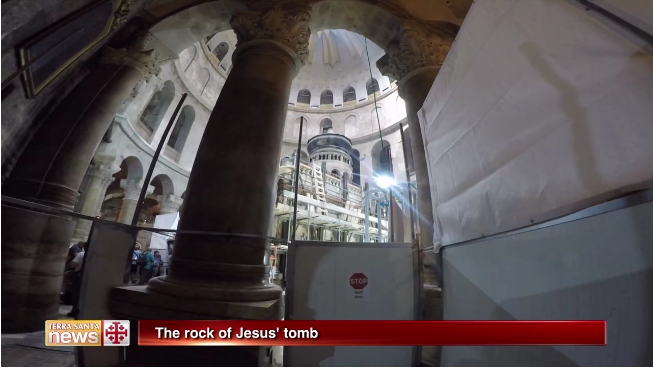After 206 years, scholars and religious authorities were able to see the tomb where Jesus was buried.
After 206 years, scholars and religious authorities were able to see the tomb where Jesus was buried.
On Wednesday October 26, the Edicule, the little chapel that encloses the Holy Sepulcher, was closed for historical works. For the first time since 1810, the marble slab covering the place beneath which the remains of the rock of Jesus’ tomb lie, has been moved. The last time this happened was in 1555.
The event was held behind closed doors in the presence of the Orthodox Patriarch Théophilos III, accompanied by a small delegation of religious and scientists, the Delegation of the Custody of the Holy Land, composed by the Custodial Vicar Father Dobromir Jasztal, as well as Father Eugenio Alliatas, archaeologist of the Studium Biblicum Franciscanum, Father Narciso Klimas, Father Enrique Bernejo, Father David Grenier and the architect Osama Hamdam from the Scientific Commission. There was a delegation of Armenians, led by Bishop Sevan, in addition to the Copts of the Holy Sepulcher.


